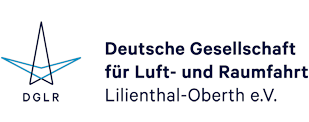DGLR-Publikationsdatenbank - Detailansicht
Autor(en):
M. Esposito, V. Nugnes, D. Silberhorn, A. De Marco , T. Zill
Zusammenfassung:
The aviation industry is at a critical crossroads, facing the challenge of significantly reducing its environmental impact while maintaining efficiency and performance. One of the most promising long-term strategies is the transition to hydrogen-powered aircraft, which offer the potential for zero carbon emissions during operation. However, the complete shift to hydrogen propulsion presents significant technological, infrastructural, and economic challenges that require time to overcome. In this context, a dual-fuel aircraft, capable of operating on both kerosene and liquid hydrogen (LH2), emerges as a pragmatic intermediate step. The dual-fuel strategy analyzed considers LH2 as primary fuel, and kerosene as an additional fuel to be exploited in a separate subsequent mission, in case hydrogen is not available at the destination airport. The aim of this work is to design dual-fuel aircraft concepts, in order to investigate the performance of such a hybrid option as well as the complexity of the modifications needed to use two energy carriers. The analysis of the performance of dual-fuel compared to pure liquid hydrogen concepts, evaluated over a wide variety of possible missions, is the main result of the work. The study shows, given an expected worsening of the aircraft efficiency due to the increased weight and wetted area coming from inclusion of an additional fuel, the extent of these penalties, opening up to the possibility for a future assessment on the trade-off between an operational ease in the transition-to-hydrogen phase and performance losses. In this context, the specific energy is evaluated over two consecutive missions with diverse range values combinations, and compared for dual-fuel, operating on LH2 in the first leg and on SAF in the second, liquid hydrogen (refueled for the second mission) and liquid hydrogen tankering concepts.
Veranstaltung:
Deutscher Luft- und Raumfahrtkongress 2025, Augsburg
Verlag, Ort:
Deutsche Gesellschaft für Luft- und Raumfahrt - Lilienthal-Oberth e.V., Bonn, 2025
Medientyp:
Conference Paper
Sprache:
englisch
Format:
21,0 x 29,7 cm, 12 Seiten
URN:
urn:nbn:de:101:1-2511071320339.550712779712
DOI:
10.25967/650376
Stichworte zum Inhalt:
Aircraft Design, Dual-Fuel, Liquid Hydrogen
Verfügbarkeit:
Download
- Bitte beachten Sie die Nutzungsbedingungen dieses Dokuments: Copyright protected
Kommentar:
Zitierform:
Esposito, M.; Nugnes, V.; et al. (2025): Design of Dual-Fuel Aircraft Concepts: A Potential Intermediate Step in the Transition towards Hydrogen-Powered Aviation. Deutsche Gesellschaft für Luft- und Raumfahrt - Lilienthal-Oberth e.V.. (Text). https://doi.org/10.25967/650376. urn:nbn:de:101:1-2511071320339.550712779712.
Veröffentlicht am:
07.11.2025
